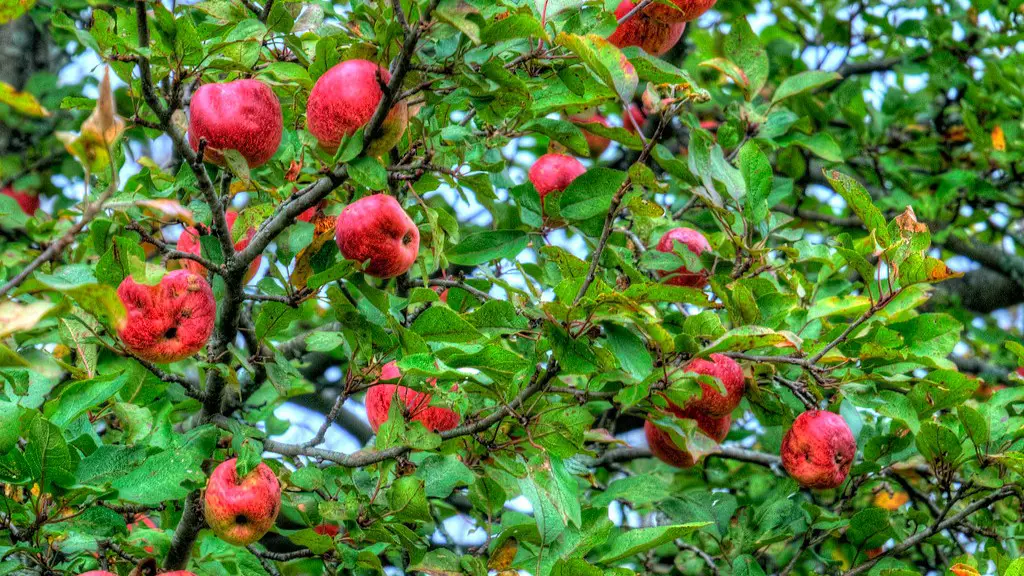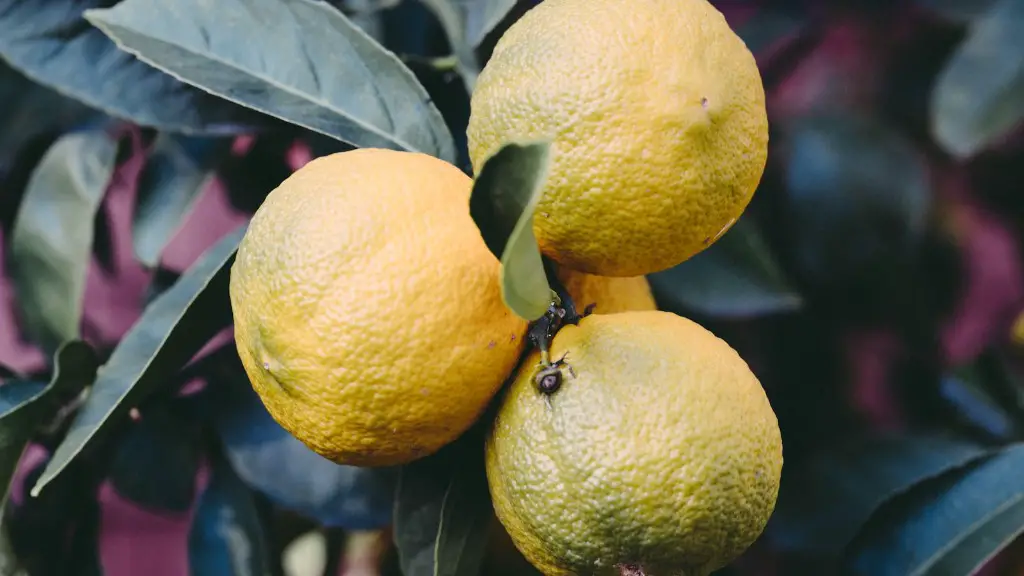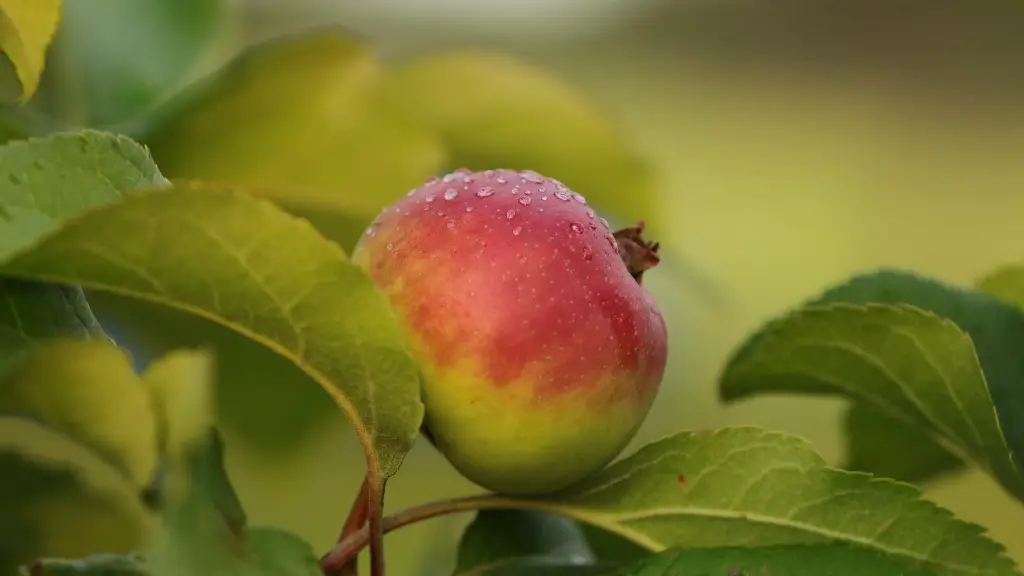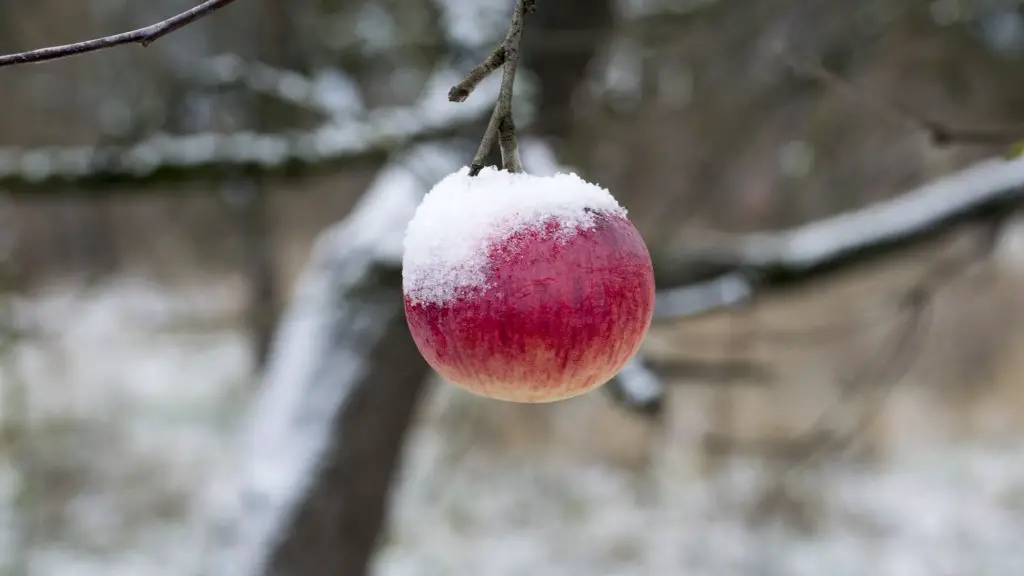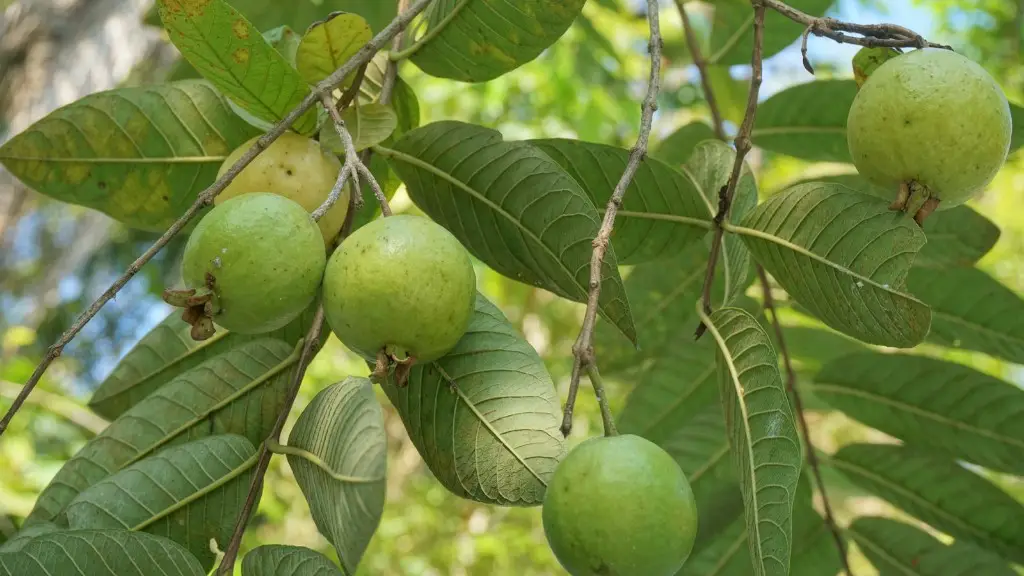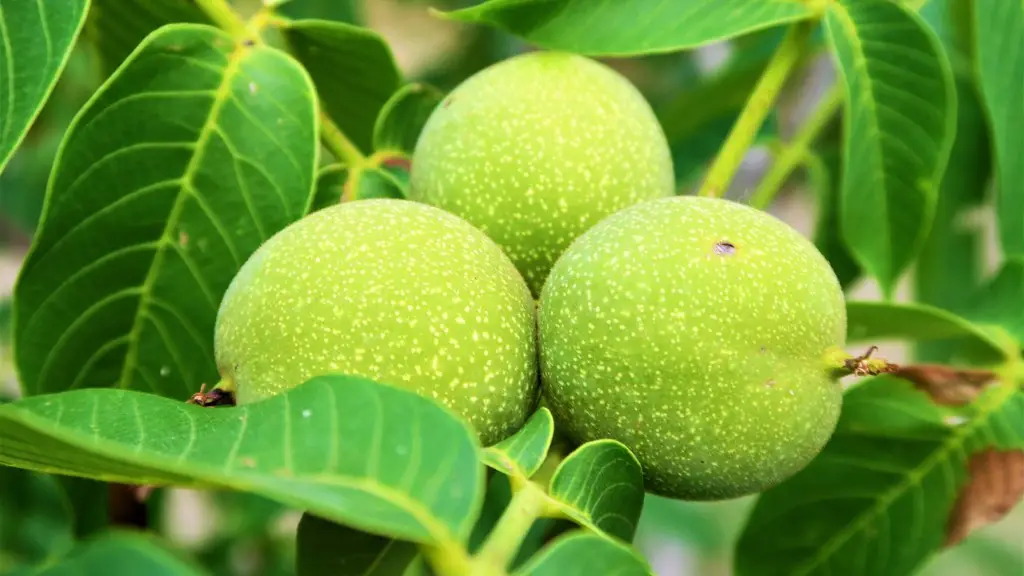Taking cuttings from an apple tree is a simple and effective way to propagate new trees. It is a great way to double or triple your apple tree crop without any costly or complicated methods. This article explains the steps to take to take apple tree cuttings and have them successfully sprout.
First, select a healthy branch from the parent tree. It should be green and flexible. Cut the branch with a sharp knife very close to the branch. Make sure the branch is at least 6 inches long and has multiple buds on it. Cut several branches so you have plenty of options.
Second, bury the branch in moist soil. The branch end should be just slightly below the soil surface and the bud end should be above it. Make sure the soil is consistently moist and doesn’t dry out. Fertilizer or compost can be added to the soil if desired.
Third, keep the branch in a warm, sunny location. If kept in direct sunlight, make sure to provide some shade. Keep the soil consistently damp, though not wet. Monitor the branch for signs of growth, and water it if it looks dry.
Fourth, prune the branch back when new growth appears. Prune off all but the strongest bud, and trim the rest of the growth back. This will help the new tree to focus its energy on developing a strong root system.
Fifth, let the branch continue to develop. The roots should form within a few weeks. Once the roots are established, carefully remove the branch from the soil and plant it in a new pot or the ground. Make sure to keep the soil moist and provide regular water.
Sixth, use a slower-release fertilizer or compost as needed to help the new tree grow. This will provide essential energy and nutrients. Monitor the new tree for any signs of disease or pests, and treat them as needed.
Seventh, prune off any suckers that may form. These are shoots that come from the branches of the rootstock and do not produce fruit. Pruning them off will help the new tree stay healthy and encourage fruit production.
Caring for a Young Apple Tree
Once an apple tree has been propagated, it needs to be cared for in order to become a strong and productive tree. Proper pruning techniques, an adequate amount of water and nutrient-rich soil are all essential for a healthy apple tree. Proper pruning techniques help the tree stay compact, promote fruit production and helps avoid roadblocks to proper growth, such as disease and pests.
Young apple trees need regular watering. During their first few years, keep the soil around the tree consistently moist without over-saturating it. A good rule of thumb is to water the tree when the top two inches of soil are dry. As the tree matures, it will be able to withstand longer dry spells without adverse effects.
Also, provide your apple tree with nutrient-rich soil. Fertilize yearly using a slow-release formula. Pay attention to the soil pH level, as apple trees prefer more acidic soil. Add compost or organic matter to the soil on a regular basis to maintain its fertility.
Also, watch for signs of pests and disease. Apple tree pests and disease can be difficult to combat, so preventive measures are important. Be on the lookout for symptoms, such as wilting leaves, off-color leaves and nutritionally stunted trees.
If a pest or disease is spotted, take steps to quickly control it. Insecticidal soaps, horticultural oils and fungicides are all effective in treating different pest and disease outbreaks.
Choosing the Right Variety
When propagating an apple tree, it is important to select the right variety. Different varieties are bred to be better-suited for certain climates, types of soil, and levels of sunlight. Make sure to select a variety that will be successful in your particular climate. For example, some varieties are disease resistant and tolerate colder temperatures better than others.
Apple trees are also bred for certain characteristics. For example, some apple varieties may produce higher yields of sweeter apples, while others can have slow maturity or rocky-textured skin. It is important to select a variety that fits with your preference and growing conditions.
When shopping for apple tree varieties, choose trees that have been certified as pest and disease free. Look for signs that the cultivar was tested for vigor and growth potential, as well as disease resistance. Buy from reputable nurseries if possible to ensure that the tree is truly disease-free.
Finally, make sure to select trees that will pollinate each other for maximum fruit production. Ideally, choose two different apple tree cultivars that bloom at the same time and are compatible pollinators.
Planting an Apple Tree
Before planting an apple tree, select a site that receives at least 6 hours of sunlight each day. The soil should be well-drained and relatively fertile. To increase fertility, add natural nutrients like compost or manure to the soil before planting.
Apple trees should be planted in a hole that is twice as big as the root ball. The soil should be leveled and gently tamped down around the tree. Water the new tree thoroughly and make sure to spread mulch around the base to help conserve moisture and regulate temperature.
It is also important to stake the tree. Doing so will provide extra support during storms or periods of high wind. Place the stake at least 2 feet from the tree in the direction of the prevailing wind. Secure the stake with twine or wire and make sure it is above the root crown of the tree.
Once the tree is staked and planted, prune any dead, damaged or crowded branches. This will help the tree grow and develop correctly and form a healthy, compact shape.
Pruning an Apple Tree
Pruning an apple tree is essential for its health and fruit production. When pruning, make sure to use proper tools, such as pruners, loppers, pole pruners and saws. Prune early in the year, before the tree buds in the spring. Also remove any dead or diseased limbs as soon as they are spotted.
When pruning, aim to maintain an open center and a vase shape. This will help the tree receive adequate sunlight and keep its center open for fruit production. Also, prune off any growth that is crossing or rubbing against another branch, as this can cause damage.
Also, always prune off water sprouts and suckers. Do not prune too much at once, as this can shock the tree and cause it to enter a period of recovery. Remove no more than one-third of the canopy at one time.
Harvesting an Apple Tree
When an apple tree is ready to harvest, look for signs that indicate its readiness. Apples will usually change in color and size and will no longer be bitter or hard. The apple should also have reached its peak sweetness and have smooth skin.
To pick an apple, tilt the stem up and gently twist the apple until it pops off the branch. Be careful to avoid damaging the other branches when picking apples.
Apples can be stored in the refrigerator for up to a month. Place them in plastic bags with holes in them and store them in the coldest part of the fridge. Apples can also be frozen, canned, or dried for longer storage.
It is also possible to pick apples from the ground, though this does not ensure the best quality. If picking apples from the ground, make sure to wash them thoroughly before eating as dirt and other debris may have accumulated on the fruit.
Protecting an Apple Tree from Frost
Frost can cause serious damage to apple trees. If the temperature dips below 28°F, it could cause the flowers and leaves to die. To protect your apple tree from frost, cover the tree with a blanket or tarp when a frost warning is issued. Leave the cover in place until the morning when the temperature outside is warmer.
Also, make sure to water the tree before a frost warning. This will help to insulate the tree and protect it from the potentially damaging cold. Also, if possible, create a windbreak around the tree. This will help to deflect the cool wind, which can be just as damaging as the cold.
If a severe frost does occur, check the tree for damage. Prune off any dead or damaged branches, as this will help the tree to channel its energy into making healthy new growth. Also, provide adequate water to make sure the tree does not become dehydrated.
Propagating an Apple Tree from Seed
Apple trees can also be propagated from seed. Start by collecting seeds from a mature apple. Place them in moist sand or soil and store in a cool location. After several weeks, the seeds should start to germinate. Plant the sprouted seedlings in well-draining soil and care for them as you would a regular apple tree.
Keep in mind that the trees produced from the seeds may not come true to their parents. For example, the fruit produced by a seedling may be different in size, shape or color from the parent apple. If a specific apple is desired, it is best to propagate from cuttings rather than from seed.
